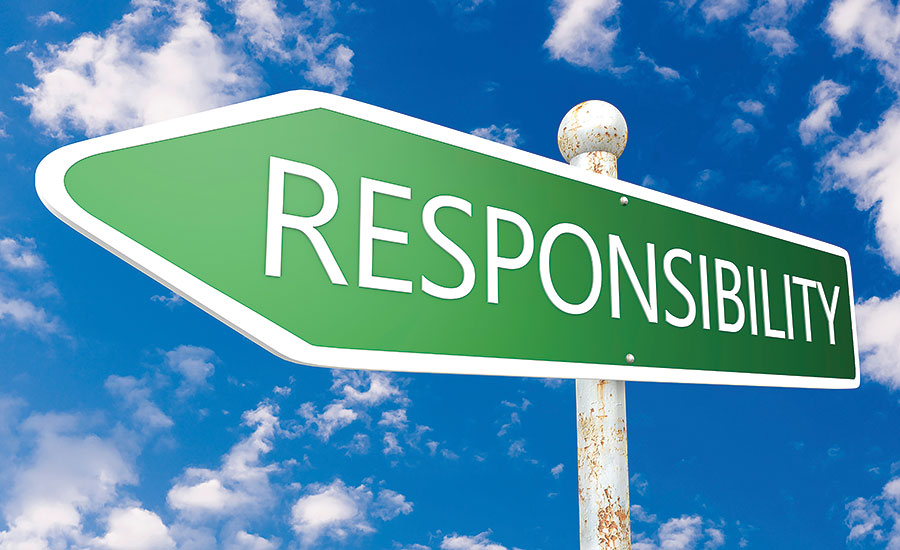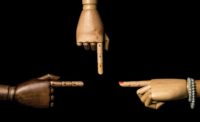As a preface to this article: The definition of “personal accountability” that I use in my daily life is this – “A personal choice to demonstrate the ownership of achieving desired results regardless of the obstacles in the way.”
Personal choice often lies in the cracks that hold your truths. It’s a tough to scrutinize truths that only you know about and question your efforts, motivations and missed opportunities in order to succeed in the next endeavor.
Know your excuses
When this definition is applied to the charge of an EHS professional, it takes on even more importance. It is the difference between falling prey to common barriers and rising to the challenge to overcome them. This is not to say that we don’t make mistakes or that we have all the answers or that the path is always clear. But it does mean that we identify statements such as “I tried” or “I told them” as excuses. Our focus should be on learning from what we have “tried” and what we have “told them.” We then need to use that knowledge to make adjustments pursuant to a more positive future outcome.
In a recent LinkedIn group sponsored by ISHN for EHS Professionals, there was a survey asking what their top challenges were. Topping the list was management/leadership engagement. As part of the survey, there was an opportunity to provide commentary on why it was selected as a top challenge. As I read the responses, two stuck out in my mind:
“To get leadership to buy-in to new procedures, equipment and ideas is hard; it is even harder than getting field workers on board.” I respectfully call this an excuse, as we all know this is hard. Simply calling out the fact it is hard is not a solution.
“Understanding the requirements for controlling hazards and the business climate in which you are working. Interacting and communicating the knowledge allows one to gain management support.” To me, this statement demonstrates personal accountability.
Management/Leadership was identified as a problem by initially selecting it as a top challenge. The comments take ownership in the solution. It is not simply management’s responsibility to listen; it is our job to communicate in a way that gains their support.
There is a phase I commonly use, “If you want them to learn your language, then you first have to understand theirs.” We must do this whether we are talking to leadership or to the people in the field. To be personally accountable for the impact of your program means it is on you to figure this out. What language is needed to get leadership on board? If you have had several conversations that have not gained the desired support, don’t get discouraged. You must take your understanding of the audience and learn from past conversations. Then change your approach by adjusting your language to better influence them.
Three guys walk into a safety meeting.
A process improvement leader, a president and an EHS professional:
I was recently presenting in front of the safety and leadership team at a customer site. I explained that in my role, my charge is to help my customers save lives through improvements in their inspection/observation processes and use collected information to drive actionable improvements. I explained how I truly believe that personal accountability starts with me. If there is a serious incident that takes place on one of their sites, I feel it deeply. Upon reflection, I ask myself what more could I have done with the customer to prevent this from happening. More than likely, the customer would never even consider me as part of the reason someone got hurt, which is appropriate, but at some level I hold myself personally accountable.
Top level support
In unscripted fashion, the president of the company stood up and said, “This is exactly my belief as well. It is my responsibility to make sure everyone makes it home at the end of the day. I am personally accountable. If someone gets hurt on one of our jobsites then I should have been more aware or I did not communicate/support enough or there is something you were trying to tell me that I did not hear. ”
We should all be so lucky to have this level of support from the top of our organization. However, this president didn’t start with this attitude. It was through efforts of the safety director both learning the language of his president and using it to gain respect and support over time.
Finally, an EHS professional from this company stood up and said, “I feel this discussion about personal accountability in a very deep way. Five years ago I killed two people. I was responsible for a construction crew at that time. I noticed two people from another crew engaging in high-risk behavior. In that moment, I decided that I am responsible for my crew and it was not my place to intervene. That decision haunts me because 15 minutes later they were dead. That is what led me to be an EHS professional. My personal accountability demands that I spend the rest of my life making sure that does not happen again.” Silence loomed.
A personal choice
In all reality, the EHS professional at the time was not “responsible” for the two people not in his crew. There is no one on the jobsite that would have even considered them being responsible. However, he knew. He looked into the areas mentioned at the beginning of this article, the cracks. However, what he chose to do is hold himself personally accountable and take the career-changing action to be in the best position to prevent a similar occurrence from happening again.
Personal accountability is a personal choice to demonstrate the ownership of achieving desired results regardless of the obstacles in the way. This personal choice is a tough decision to scrutinize truths that only you know about and question your efforts, motivations and missed opportunities in order to succeed in the next endeavor. In safety, achieving a desired result is not success. It is the protection of life. We need to continually learn from our experiences, gain new insights and continually hold ourselves accountable for the impact of the safety programs we are responsible for.





